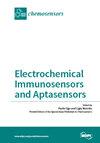A Naked-Eye Colorimetric Ratio Method for the Selective and Sensitive Detection of L-Cys Based on a Silver Nanoflakes–Chromium (III) Ion System
IF 3.7
3区 工程技术
Q2 CHEMISTRY, ANALYTICAL
引用次数: 0
Abstract
As a necessary sulfhydryl amino acid, L-cysteine (L-Cys) maintains many physiological functions in the biological system. However, abnormal L-Cys levels can cause a variety of diseases. In our work, a highly sensitive and selective assay has been developed for sensing L-Cys using the morphological transformation of silver-based materials induced by Cr3+. In this sensing system, Cr3+ could etch the silver nanoflakes into silver nanoparticles, accompanied by a change in absorbance, which decreases at 395 nm, creates a new peak at 538 nm, and keeps increasing the absorbance with the addition of Cr3+ concentration. Meanwhile, under the naked eye, the solution color changes from bright yellow to dark purple. Because of the strong affinity between L-Cys and Cr3+, L-Cys could inhibit the induction of Cr3+ on silver-based materials, thereby preventing changes in the configuration, absorption spectrum, and color of silver-based materials. Taking advantage of this point, we can quantitatively detect the concentration of L-Cys. A linear relationship between the absorbance ratio (A538 nm/A395 nm) and L-Cys concentration was found in the range of 0.1–0.9 μM, and the detection limit was 41.2 nM. The strategy was applied to measure L-Cys spiked in beer and urine samples, with recovery from 93.80 to 104.03% and 93.33% to 107.14% and RSD from 0.89 to 2.40% and 1.80% to 6.78%, respectively. This detection strategy demonstrates excellent selectivity and sensitivity, which makes it a practical and effective method for the detection of L-Cys in real samples.基于纳米银片-铬 (III) 离子体系的选择性灵敏检测 L-Cys 的裸眼比色法
作为一种必需的巯基氨基酸,L-半胱氨酸(L-Cys)能维持生物系统的许多生理功能。然而,L-半胱氨酸水平异常可导致多种疾病。在我们的工作中,利用 Cr3+ 诱导的银基材料形态变化,开发出了一种高灵敏度和高选择性的 L-Cys 检测方法。在这一传感系统中,Cr3+能将银纳米片蚀刻成银纳米颗粒,并伴随着吸光度的变化,在395 nm处吸光度降低,在538 nm处产生一个新的峰值,并随着Cr3+浓度的增加吸光度不断升高。同时,在肉眼观察下,溶液颜色由亮黄色变为深紫色。由于 L-Cys 与 Cr3+ 的亲和力很强,L-Cys 可以抑制 Cr3+ 对银基材料的诱导作用,从而防止银基材料的构型、吸收光谱和颜色发生变化。利用这一点,我们可以定量检测 L-Cys 的浓度。吸光度比值(A538 nm/A395 nm)与 L-Cys 浓度在 0.1-0.9 μM 范围内呈线性关系,检测限为 41.2 nM。应用该方法检测啤酒和尿液样品中的左旋Cys,回收率分别为93.80%至104.03%和93.33%至107.14%,RSD分别为0.89%至2.40%和1.80%至6.78%。该检测策略具有极佳的选择性和灵敏度,是检测实际样品中左旋Cys的一种实用而有效的方法。
本文章由计算机程序翻译,如有差异,请以英文原文为准。
求助全文
约1分钟内获得全文
求助全文
来源期刊

Chemosensors
Chemistry-Analytical Chemistry
CiteScore
5.00
自引率
9.50%
发文量
450
审稿时长
11 weeks
期刊介绍:
Chemosensors (ISSN 2227-9040; CODEN: CHEMO9) is an international, scientific, open access journal on the science and technology of chemical sensors published quarterly online by MDPI.
 求助内容:
求助内容: 应助结果提醒方式:
应助结果提醒方式:


